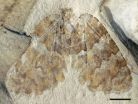(Press-News.org) Diese Pressemitteilung ist verfügbar auf Englisch.
Die weltweiten Kohlenstoffvorräte in den Böden übersteigen jene aus Pflanzen und Atmosphäre um das Dreifache. Organische Bodensubstanzen wie beispielsweise Humus spielen beim globalen Kohlenstoffkreislauf eine zentrale Rolle, da sie riesige Mengen an Kohlenstoff speichern und so der Klimaerwärmung entgegenwirken. Das Kyoto-Protokoll gestattet daher den unterzeichnenden Ländern, Böden und Wälder als sogenannte Kohlenstoffsenken an die Treibhausgas-Emissionen anzurechnen. Doch es ist weitgehend unbekannt, weshalb gewisse organische Bodensubstanzen während Jahrtausenden stabil bleiben, andere dagegen schnell zerfallen und wiederum Kohlenstoff freigeben. Die bisher verwendeten Erklärungsmodelle gehen davon aus, dass die Abbaugeschwindigkeit von der molekularen Struktur der organischen Bodensubstanz abhängig ist. Jetzt weist ein internationales Forschungsteam mit 14 Wissenschaftlern unter der Leitung von Michael Schmidt, Professor für Bodenkunde und Biogeographie an der Universität Zürich, in Nature nach, dass zahlreiche andere Faktoren die Abbaugeschwindigkeit von organischer Bodensubstanz beeinflussen.
Bodenumwelt bestimmt Abbautempo des Humus
«Das Abbautempo wird nicht von der molekularen Struktur der abgestorbenen Pflanzenreste bestimmt, sondern von der Bodenumwelt, in der der Abbau stattfindet», fasst Schmidt die neuen Resultate zusammen. So beeinflusst u.a. die physische Isolation der Moleküle oder die Tatsache, ob die Moleküle im Boden durch mineralische oder physikalische Strukturen geschützt sind, die Abbaugeschwindigkeit von organischen Bodensubstanzen. Auch die Bodenfeuchtigkeit spielt eine wichtige Rolle. Die Forschenden können weiter zeigen, dass es entgegen der Lehrmeinung keine Huminstoffe im Boden gibt und diese deshalb nicht für Modelle herangezogen werden dürfen.
Es braucht neue Experimente und Modelle
Wie Prof. Schmidt erklärt, müssen die Erkenntnisse nun für neue Experimente und Modelle genutzt werden. Dabei sollen nicht nur wie bis anhin die ersten Zentimeter des Bodens untersucht werden, sondern die gesamten oberen zwei bis drei Meter. Die Forscher machen in ihrem Artikel verschiedene Vorschläge, wie die Modelle zur Prognostizierung der Reaktion von Böden auf Veränderungen des Klimas, der Vegetation und der Landnutzung zu verbessern sind.
Die neuen Erkenntnisse werfen zudem ein kritisches Licht auf Bioengineering-Versuche mit stark Lignin-haltigen Pflanzen oder Pflanzenkohlen (Biochar), mit denen langfristig mehr Kohlenstoff im Boden gespeichert werden soll.
###
Literatur:
Michael W. I. Schmidt, Margaret S. Torn, Samuel Abiven, Thorsten Dittmar, Georg Guggenberger, Ivan A. Janssens, Markus Kleber, Ingrid Kögel-Knabner, Johannes Lehmann, David A. C. Manning, Paolo Nannipieri, Daniel P. Rasse, Steve Weiner & Susan E. Trumbore: Persistence of soil organic matter as an ecosystem property, in: Nature, 6 October, 2011, DOI: 10.1038/nature10386
Kontakte:
Prof. Dr. Michael Schmidt
Universität Zürich
Geographisches Institut
Tel. 41-44-635-51-40
E-Mail: michael.schmidt@geo.uzh.ch
Zusammenhang zwischen Boden als Kohlenstoffspeicher und globaler Erwärmung überdenken
2011-10-06
ELSE PRESS RELEASES FROM THIS DATE:
Rethinking connection between soil as a carbon reservoir and global warming
2011-10-06
Soils store three times as much carbon as plants and the atmosphere. Soil organic matter such as humus plays a key role in the global carbon cycle as it stores huge amounts of carbon and thus counters global warming. Consequently, the Kyoto Protocol permits the signatory countries to count soils and forests against greenhouse gas emissions as so-called carbon sinks. Exactly why some soil organic matter remains stable for thousands of years while other soil organic matter degrades quickly and releases carbon, however, is largely unknown. The explanatory models used thus ...
A new species of fossil silky lacewing insects that lived more than 120 million years ago
2011-10-06
A team of researchers from the Capital Normal University in Beijing (China) and the Institute of Biology and Soil Sciences in Vladivostok (Russia) has discovered a remarkable silky lacewing insect from the Mesozoic of China. The study has been published recently in the open access journal ZooKeys and is available for free download.
The extant silky lacewings (the family Psychopsidae) may be recognized by their broad wing shape, dense venation, spectacularly patterned and hairy wings. Today, this family is very small, restricted only to southern Africa, southeastern Asia ...
From myth to reality: Photos prove triple rainbows exist
2011-10-06
WASHINGTON, Oct. 5—Few people have ever claimed to see three rainbows arcing through the sky at once. In fact, scientific reports of these phenomena, called tertiary rainbows, were so rare—only five in 250 years—that until now many scientists believed sightings were as fanciful as Leprechaun's gold at a rainbow's end. These legendary optical rarities, caused by three reflections of each light ray within a raindrop, have finally been confirmed, thanks to photographic perseverance and a new meteorological model that provides the scientific underpinnings to find them. The ...
BaseKit Breaks Into the Red Bull Future 50!
2011-10-06
BaseKit, the online website builder, has been selected as a firm of the future and listed in the Red Bull Future 50 - a list of the most groundbreaking British firms that are less than four years old. The list serves as a guide to the UK's most creative, stylish, visionary and disruptive brands. The nationwide search began in June and final selections for the Red Bull Future 50 were made by a panel of judges including: Nigel Trood, MD of Red Bull UK; Madeleine Milne, MD of Emusic; and Jos White, investor and co-founder of MessageLabs. The full list is currently viewable ...
Bacteria forge nitrogen from nitric oxide
2011-10-06
The anaerobic oxidation of ammonia (anammox) is an important pathway in the nitrogen cycle that was only discovered in the 1980s. Currently, scientists estimate that about 50 percent of the nitrogen in the atmosphere is forged by this process. A group of specialized bacteria perform the anammox reaction, but so far scientists have been in the dark about how these bacteria could convert ammonia to nitrogen in the complete absence of oxygen. Now, 25 years after its discovery, they finally solved the molecular mechanism of anammox.
Anammox bacteria are very unusual because ...
NFL's Houston Texans Recognize Attorney Benny Agosto With Hispanic Heritage Leadership Award
2011-10-06
The National Football League (NFL) has teamed up with Bud Light to launch the NFL Hispanic Heritage Leadership Awards. This Sunday, October 9, the NFL is celebrating 2011 Hispanic Heritage Day.
As part of the celebration, each of the 32 football teams is recognizing one member of the community for his or her positive impact on the local Hispanic population. The Hispanic Heritage Awards honor notable Latinos who have not only distinguished themselves in their field, but have also made an impact on America.
The Houston Texans have chosen to honor attorney Benny Agosto ...
Earliest psychomyiid caddisfly fossils, from 100-million-year-old Burmese amber
2011-10-06
The examination of insects in Burmese amber by researchers at the University of Cologne, Germany and National Museums Scotland revealed a new genus of caddisfly, which has been named Palerasnitsynus.
The discovery, based on two specimens, constitute the first record of the living family Psychomyiidae in Burmese amber and the oldest known member of this family in the fossil record. Burmese amber is 100 million years old, from the Cretaceous Period, so this discovery adds to our understanding of the caddisfly fauna in that part of the world at that time.INFORMATION:
Original ...
Wisconsin's Boating Season off to a Deadly Start
2011-10-06
As of early August, Wisconsin's 2011 boating season reached a sad milestone: the number of boating deaths for the summer of 2011 had already equaled the total number of boating deaths in 2010. And, with approximately a month left of summer, Wisconsin's boating season may be in its waning moments, but there is plenty of beautiful weather left for boating, and the potential for more accidents.
Numbers released by the Wisconsin Department of Natural Resources state that, as of early August, 18 people lost their lives in boating accidents on Wisconsin's rivers and lakes. ...
Unlocking jams in fluid materials
2011-10-06
In a study recently published in European Physical Journal E (EPJE), a German scientist constructed a theoretical model to understand how to best avoid jamming of soft matter that can be applied in food and cosmetics production.
Thomas Voigtmann, a researcher at the Institute for Material Physics in Space in Cologne, Germany, evaluated the internal friction force, or yield stress, to be overcome before a solid material made of a metallic melt with a glass structure can flow and thus prevent jamming.
These materials have an apparent viscosity that drops if they are ...
Components based on nature's example
2011-10-06
The exceptional strength of certain biological materials is due principally to their complex structure. Long bones, for instance, consist of a compact, solid outer casing filled with spongy tissue, which makes them particularly strong and resilient. Researchers from the Fraunhofer Institutes for Mechanics of Materials IWM and for Environmental, Safety and Energy Technology UMSICHT are collaborating on a project entitled "Bionic Manufacturing", which aims to develop products that are lightweight but strong and economic in their use of materials – imitating the perfected ...




